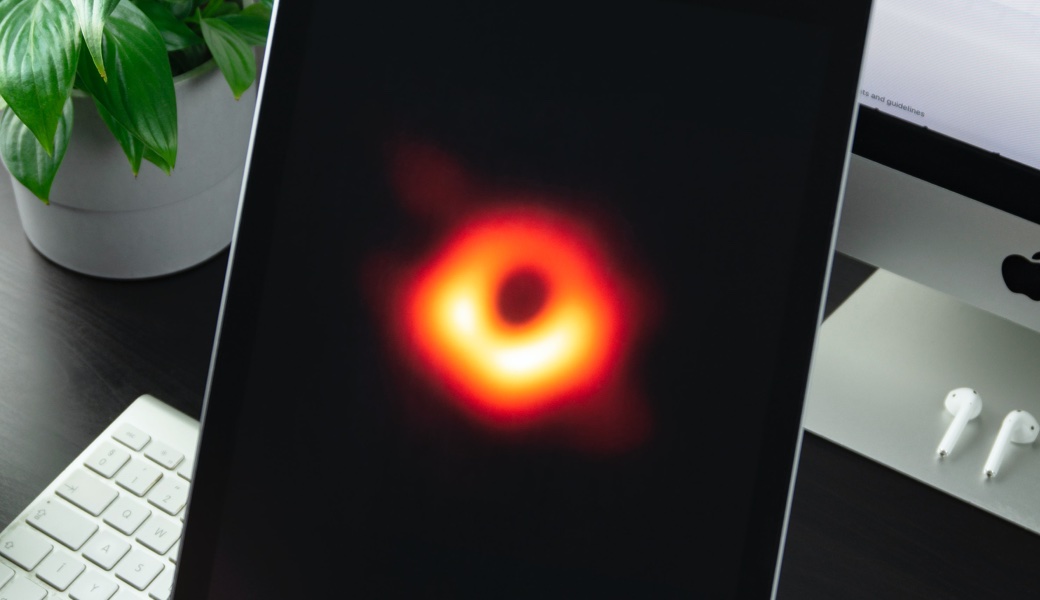
Even if you’re not an astrophysicist you still probably know at least one thing about black holes. There’s just something mysterious and even a little frightening about an object with a gravitational pull so strong that nothing can escape it. Even light.
This past week we also learned that black holes are incredibly difficult to see. It took a team of international scientists, a worldwide collection of telescopes, and some very powerful algorithms to piece together the first image of one.

Eventually, we’ll be able to use this information about black holes to travel through time and open up portals to other dimensions. Scary dimensions.

OK, that last part isn’t fully verified. Yet.
But the parts about how powerful their gravity is and how difficult they are to see are all true.
(Note, segue ahead.)
And this brings to mind another type of black hole that we see in the business world.
It also has an incredible pull and is easy to overlook. It seems harmless from a distance, but once you’re in its grasp, it’s hard to escape. It may even leave you feeling lost in some alternate dimension.
The black hole of business is indecision.
Nothing devours time quite like indecision.
Its gravity is always there waiting for any sign of weakness.
It sees you confronted with a choice. It sees you analyze your options with the limited information available. It watches as you realize there’s no perfect answer.
You start to ask more and more questions.
“What if I pick the wrong option?”
“Should I analyze the situation some more?”
“How will I feel about this tomorrow? Or next week?”
“What if I make someone mad?”
“What if I regret this?”
“What if I just decide tomorrow?”
“I wonder what’s new on Instagram…”
Before you know it, you’ve slipped over the event horizon into the indecision black hole.
And that’s it. The laws of physics and productivity cease to exist.
You’re now in an alternate reality where all that matters are the nutritional contents of snacks, the vacation pictures from that guy you were sort of friends with in junior high, and finding the pen you lost last week.
Luckily there are ways to change course and avoid this disaster.
Micro, Mini, And Macro Decisions
Every day we make thousands of decisions. A lot of them are micro in terms of importance. This includes which socks to wear and which flavor of cream cheese to use on our bagels.
Micro Decisions have almost no impact on the work day. As a result, they have almost no chance of invoking a black hole of indecision.
Next up are the sneaky Mini Decisions. These relate to mundane work tasks like when to respond to emails, which task to work on next, and when to schedule a call.
These appear harmless on their own, but as a collective they can suck up countless work hours in the black hole of indecision.
You can side step those mini black holes by developing an optimal schedule for yourself and a process for prioritizing tasks.
Slot out specific times of day to schedule calls. Batch like-tasks rather than handling them all one-off. Use a tool like Trello to track tasks and rank their importance.
There are tons of great resources to help with this. Check out Make Time by Jake Knapp and John Zeratsky for dozens of tactics to help manage daily Mini Decisions.
But beyond all of that comes the prime black hole offender. The biggies. The Macro Decisions.
These are decisions that can have a long lasting effect on your business.
They can take a long time to implement and a long time to undo if they go wrong.
This is where we can get stuck for days, weeks, or even months trying to decide.
This is where the black hole of indecision feasts.
To deal with these you need a real plan.
The Brand Guidebook Makes Decisions Easy
Every business should document the core thinking and direction around their brand strategy.
This doesn’t mean you need a giant tome outlining every nuanced detail of what your business does. These sorts of documents rarely get used and collect dust.
What you need is a lean document focused on the key elements that everyone in the company should be aligned around. A document that provides guidance on key decisions.
A Brand Guidebook includes your:
- Big Picture — Vision, Values, and Goals
- Positioning — Who your Customers are and what motivates them, your points of differentiation from the Competition, and what makes your Offering unique
- Brand and Messaging — How you want Customers to perceive your Brand, how you speak, and how to communicate your Value Proposition
These are fundamental elements that every business needs to be clear on.
And access to their definitions are critical for founders and their team when the black hole of indecision appears.
When that information is defined and shareable, it becomes much easier to make clear decisions.
Decisions on questions like:
- “Where should we invest our time to move us toward our goals?” — consult The Brand Guidebook
- “Is that partner company aligned with our values?” — consult The Brand Guidebook
- “Which of these features best supports the outcomes our customers want?” — consult The Brand Guidebook
- “Where should we double down to differentiate our product?” — consult The Brand Guidebook
- “Is our brand voice supposed to be serious or casual?” — consult The Brand Guidebook
- “Does this message articulate our value proposition?” — consult The Brand Guidebook
Rather than getting stuck in a black hole of debate around whether a decision aligns with your greater strategy, you look to The Brand Guidebook. You look to a set of agreed upon ideas. You use The Brand Guidebook as a system of checks and balances to keep you headed in the right direction.
Best of all, it helps you take action. Because even an imperfect action is better than getting sucked into a black hole.
Create A Brand Guidebook For Your Business
If you need some help creating a Brand Guidebook for your business, check out our free resources or set up a free chat with us.


